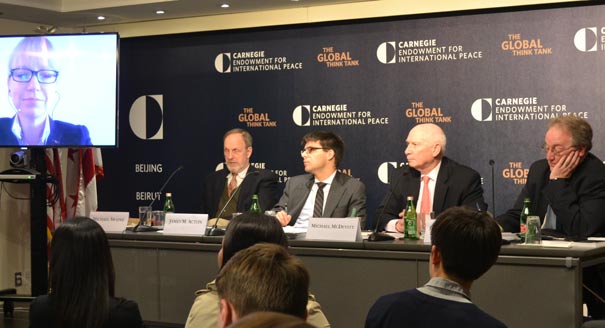Registration
You will receive an email confirming your registration.
China tested a hypersonic gliding weapon for the first time on January 9. Although details of the test are murky, it confirms a long-suspected Chinese interest in developing hypersonic weapons. The United States is interested in similar technologies and conducted its first successful boost-glide test in November 2011. What are the implications of the Chinese test for U.S. security? How should the United States respond? Could a new arms race in hypersonic technology emerge? And, if so, can anything be done to prevent it? James M. Acton, Michael D. Swaine, Phillip C. Saunders, and Lora Saalman discussed these questions. Michael McDevitt moderated.
James M. Acton
James M. Acton is a senior associate in the Nuclear Policy Program at the Carnegie Endowment for International Peace. A physicist by training, Acton specializes in nonproliferation, deterrence, and disarmament.
Michael D. Swaine
Michael D. Swaine is a senior associate at the Carnegie Endowment for International Peace and one of the most prominent American analysts in Chinese security studies.
Phillip C. Saunders
Phillip C. Saunders is director of studies and director of the Center for Study of Chinese Military Affairs at the National Defense University’s Institute for National Strategic Studies, where he has been a distinguished research fellow since January 2004.
Lora Saalman
Lora Saalman is an associate professor at the Asia-Pacific Center for Security Studies. Saalman’s research focuses on China’s nuclear and conventional weapons and cybersecurity policies vis-à-vis India, Russia, and the United States.
Michael McDevitt
Michael McDevitt is a senior fellow at the Center for Naval Analyses. He joined the center after 34 years in the United States Navy. He was director of the East Asia policy office for the secretary of defense during the George H.W. Bush Administration, and his current research focuses on the maritime dimension of China’s national strategy.
